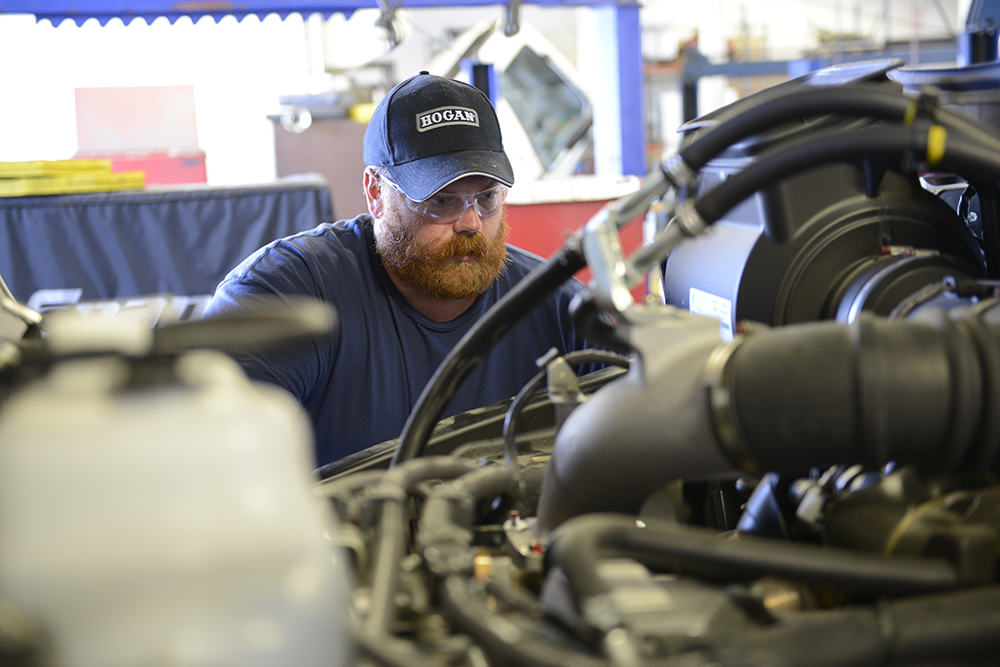Our industry continues to face shortages of drivers and technicians. But there’s an additional hill to climb, making sure our existing workforce, as well as our future workforce, has the necessary skills.
A recent Deloitte article regarding their 2021 Fortune/Deloitte CEO Survey found that workforce and talent transformation is one of the top concerns for CEOs. “When asked about the biggest challenge they face today, CEOs named one above all others: talent, in nearly every form. Attracting, hiring, retaining, developing, growing, and engaging talent; succession planning; the war for talent; and more constituted one out of every four responses.”
The only issue that rated higher than this was the need for digital transformation. It is that issue and the exponentially fast pace of all changing technology that is forcing this need to have a workforce that matches today’s needs. This is a challenge for every industry, and ours is no exception.
I’ve written a number of blogs, both here and on my FleetOwner IdeaXchange page, dealing with the tech and driver shortages and how to recruit and retain good, qualified talent. Our workforce in these areas is aging and we have trouble finding enough young people to replace them. A National Institute for Automotive Service (ASE) survey found that once you’ve managed to recruit these young people, “42% of technicians leave trucking within the first two years on the job.” And the situation for drivers is equally challenging.
COVID made a bad situation worse.
When the pandemic first hit, trucking became more important than ever, with our trucks delivering essential goods as consumers scrambled to fill their shelves and hospitals struggled to stock their inventory. Much of our back-office and other employees began to work remotely. As the economy opens, and the job market has given employees lots of options, our task of hiring qualified younger workers becomes even harder.
But even if the pandemic had not occurred, the changes in technology would have created a need for a “transformed” workforce, one with skills better suited to a digitized business environment. Most OEMs are looking to electric vehicles vs. diesel as the future of the industry and are building electric trucks in every class. Two things stand in the way of that change coming faster: supply chain backups of necessary battery components and the lack of a national infrastructure to power electric vehicles when they are on the road.
With the rise of electric vehicles comes the need for technicians who know how to work with this new technology. Yet, even before EVs become a mainstay, telematics, collision avoidance systems, and other truck technology has meant that a laptop is one of the most important tools in a technician’s toolbox. Although these new advances will make the job easier and safer for drivers, there are those older drivers who are not necessarily comfortable with ELDs and other telematics. The need for younger, more tech-savvy drivers is greater than ever.
But it’s more than what’s under the hood and behind the wheel.
Just as important as technicians and drivers are logistics personnel. Just recently, HDT’s truckinginfo ran an article about the digitization of freight, showing how this technology is transforming logistics. The main job of logistics is to ensure that the right product is delivered to the right destination in at the right time. This is what keeps the supply chain moving; relying on older, paper and manual-based legacy practices can slow down the process. Digitization connects all the stakeholders, keeps communications open, and ensures visibility into each step of the “journey.” Ultimately, this increases efficiency and reduces operational costs.
Your back-office team will also benefit from automation and digitization of accounts payable and accounts receivable functions. Your company will realize cost and time reductions when invoicing customers and paying suppliers, and you’ll be able to better manage cash flow and working capital.
What is clear is that every single facet and function of your business can benefit from today’s technology, but those benefits will only be realized if we have people with the right skills to optimize these 21st century tools.
Read my latest IdeaXchange blog on building your own apprenticeship program.





